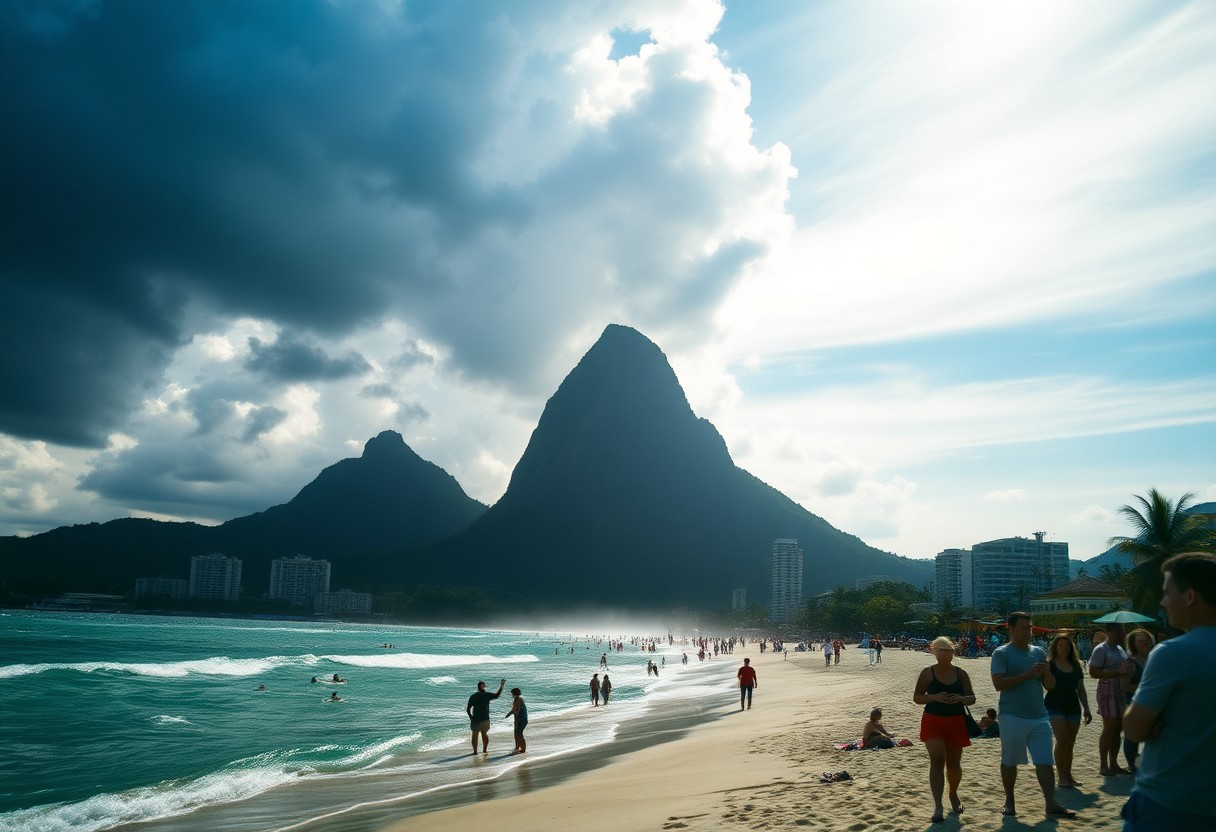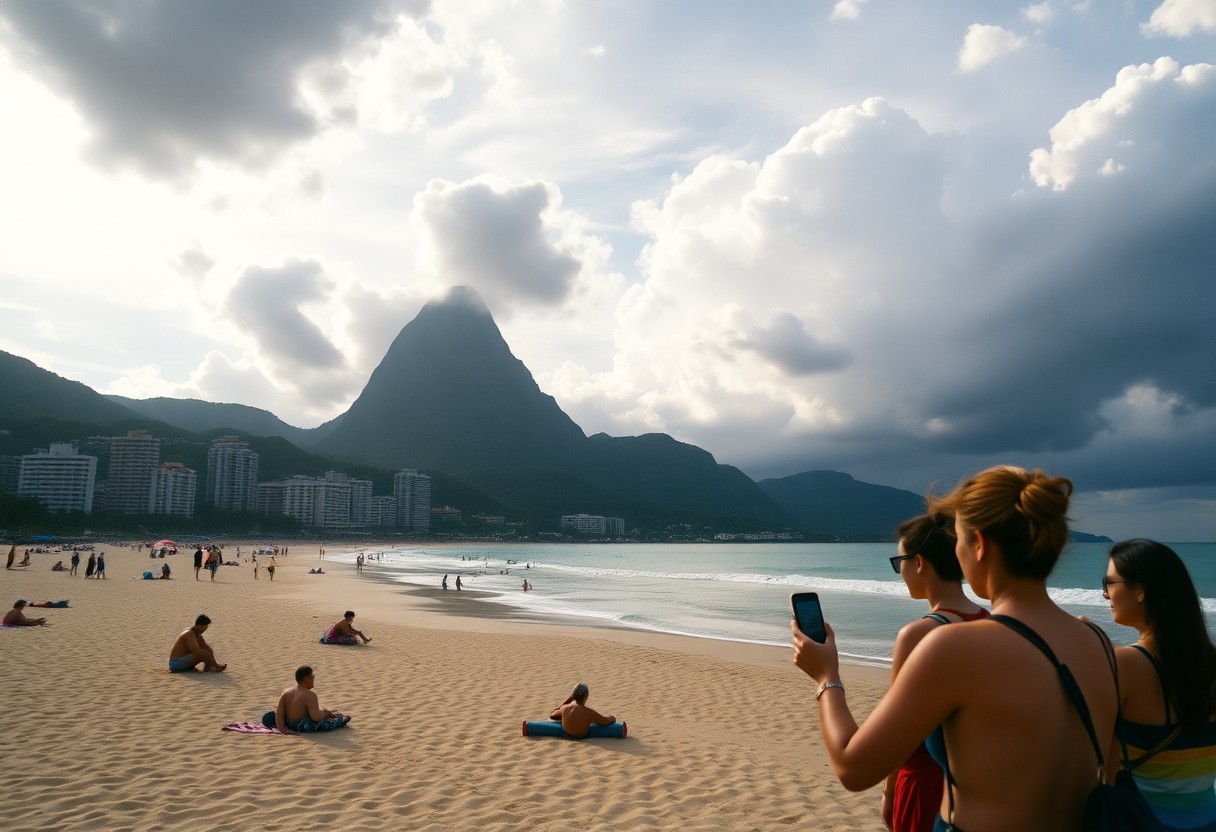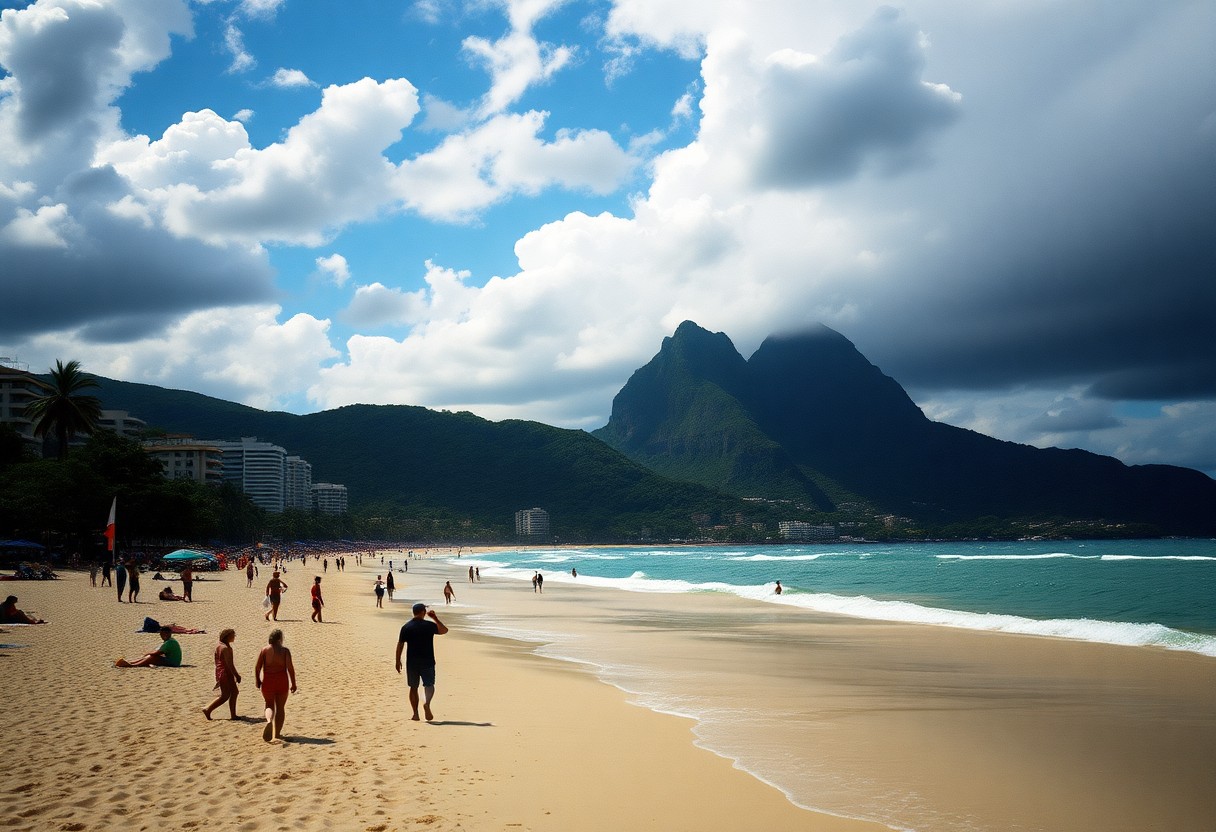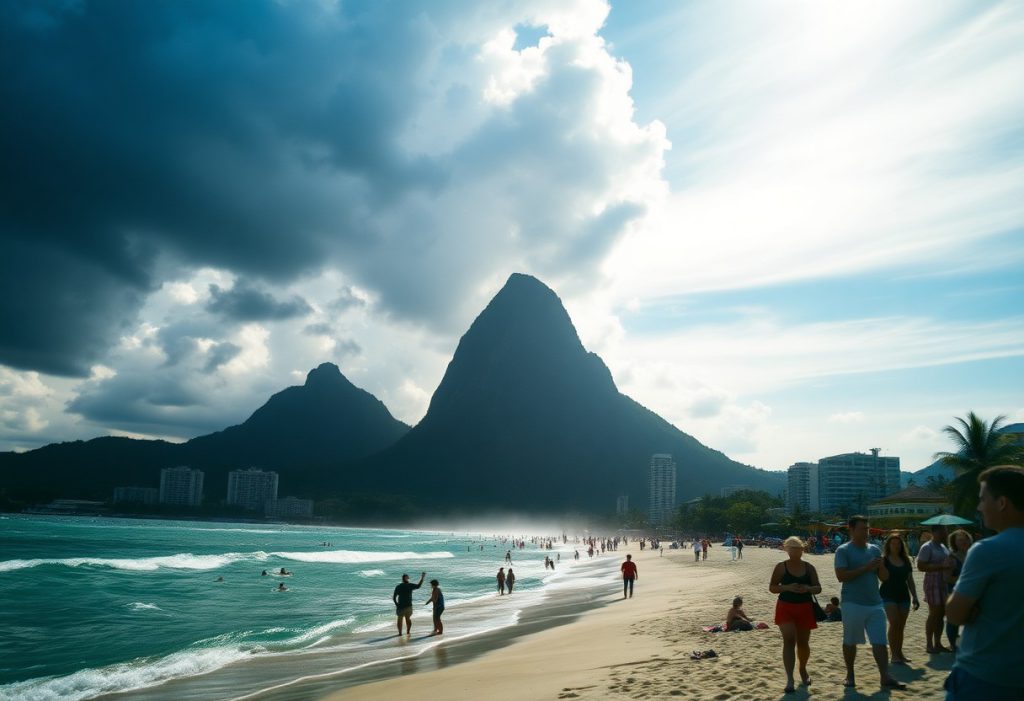As you plan your exciting journey to Rio de Janeiro, gaining insight into the best times to visit can significantly elevate your travel experience. This vibrant city enjoys warm temperatures year-round, yet each season brings distinct traits that may impact your travel choices. The summer months, spanning from December to March, are alive with vibrant Carnival celebrations, but they also come with heavy rainfall and bustling crowds. Your optimal travel window will depend on personal preferences: if sunbathing and beach fun appeal to you, the spring season from September to November is ideal, offering milder temperatures and fewer tourists. Alternatively, budget-conscious travelers may find the winter months (June to August) to be more financially advantageous. By synchronizing your travel plans with the local climate and seasonal festivities, you can maximize your enjoyment while in Rio.
Explore the Distinct Weather Patterns of Rio de Janeiro
Prior to finalizing your trip to Rio de Janeiro, it’s vital to understand the city’s tropical climate attributes. The region boasts warm temperatures throughout the year, generally fluctuating between 68°F and 88°F (20°C to 31°C). Two primary seasons are present to consider: a warm and humid summer lasting from December to March, and a milder, drier winter from June to September. Each season offers its unique advantages and challenges, making it essential to select the right time for your visit based on your planned activities and comfort preferences.
In-depth Seasonal Temperature Analysis for Rio
| Season | Temperature Range |
|---|---|
| Summer (Dec-Mar) | 77-88°F (25-31°C) |
| Winter (Jun-Sep) | 68-75°F (20-24°C) |
Throughout the year, you can anticipate comfortable temperatures in Rio, with summer months experiencing peak heat and winter offering milder conditions that are suitable for outdoor adventures. Understanding these temperature shifts is crucial for planning your activities effectively and ensuring you make the most of your time in this beautiful city.
Critical Rainfall and Humidity Factors to Consider
As you prepare for your trip to Rio, it’s essential to factor in the city’s rainfall patterns. Here are some vital details to keep in mind:
- Rainy season: December to March
- Average annual rainfall: 44 inches
- Peak humidity levels: 80% during summer
- Least rainy months: June to August
The humidity levels in Rio can greatly impact your comfort while exploring the city. Here are a few important considerations:
- Morning fog may hinder visibility at popular tourist spots
- Refreshing coastal breezes can offer relief from high humidity
- Evening humidity tends to rise near the beaches
- Air conditioning is commonly available in most accommodations

Experience the Excitement of Rio’s Peak Season (December-March)
If your travel itinerary aligns with Rio’s peak season, prepare yourself for intense heat and exhilarating festivities. This vibrant period coincides with major events such as New Year’s Eve celebrations and the famous Carnival. It’s crucial to secure your accommodations well ahead of time, as hotels fill up quickly during these lively months. Immerse yourself in the vibrant atmosphere, but also be ready for the challenges that accompany it.
Weather Conditions and Events During Peak Season
During the summer months, expect a mix of sunshine and rain, with temperatures soaring up to 40°C (104°F). Afternoon showers are frequent, particularly in December and January, contributing to higher humidity levels that can make it feel even hotter. This season is marked by major festivals and lively celebrations, infusing the city with an electric atmosphere that captivates both locals and visitors.
Assessing the Pros and Cons of Traveling in Summer
| Pros | Cons |
|---|---|
| Dynamic festival atmosphere | Overcrowded beaches |
| Ideal beach weather | High humidity levels |
| Exciting events and celebrations | Higher accommodation prices |
| Vibrant nightlife options | Longer wait times at attractions |
| Excellent swimming conditions | Afternoon rain showers |
With this knowledge, you can approach your peak season visit with a clearer understanding of what to expect. While the experience is undeniably lively and energetic, managing crowds and expenses is crucial for a fulfilling trip. Additionally, planning ahead is essential; aim to book your flights and accommodations at least 3-4 months in advance, especially if you plan to partake in the Carnival festivities. To make the most of your time, consider starting your daily activities early to avoid the harshest sun and longest queues.
Make the Most of Your Visit During the Shoulder Season (April-May)
The shoulder season offers a delightful balance between Rio’s peak and low seasons. During these months, anticipate pleasant temperatures averaging 75°F (24°C), along with fewer tourists, creating an ideal setting for exploring the city’s diverse attractions. This period is especially attractive for those desiring a more relaxed experience without the overwhelming summer crowds.
Climate Characteristics During the Shoulder Season
While experiencing the shoulder season, you’ll encounter mild and comfortable weather in Rio de Janeiro. Compared to summer, there are fewer rainy days, with only occasional light showers. The humidity significantly decreases, making outdoor activities much more enjoyable. The ocean temperature remains inviting for swimming, sitting at around 73°F (23°C), enabling you to enjoy beach activities comfortably.
Travel Advantages and Cost Savings During Shoulder Season
For budget-conscious travelers, the months of April and May present excellent opportunities for savings. During this time, hotel rates can drop by up to 30% compared to peak season, and shorter wait times at popular attractions like Christ the Redeemer and Sugarloaf Mountain enhance your experience. The shoulder season is an optimal time to enjoy favorable weather and accessibility.
The mild climate allows for beach activities without overwhelming crowds and provides a comfortable backdrop for exploring outdoor markets and taking advantage of discounted prices on tours and activities. The pleasant weather creates an inviting atmosphere for hiking in Tijuca National Park or participating in walking tours through Rio’s historic neighborhoods.

Experience the Unique Charm of Rio’s Winter Months (June-September)
Rio’s winter months provide a refreshing shift, featuring pleasant temperatures between 18-25°C (64-77°F). This season is marked by reduced rainfall and humidity, making it perfect for a wide range of outdoor activities. While beach outings may be less frequent, you will discover fewer tourists and more appealing hotel rates, providing a distinctive experience in the city.
Winter Temperature and Weather Overview
| Feature | Description |
|---|---|
| Average Temperature | 18-25°C (64-77°F) |
| Rainfall | Minimal |
| Humidity | Lower than summer |
| Sunshine Hours | 6-7 hours daily |
During winter, minimal rainfall occurs, allowing for clear views of Christ the Redeemer and Sugarloaf Mountain. You will enjoy stable weather patterns with plenty of sunny days, making it an ideal time for sightseeing and outdoor explorations.
Engaging Activities and Advantages for Tourists in Winter
Winter presents some of the best opportunities for sightseeing in Rio. Expect shorter lines at major attractions and enjoy comfortable hiking in Tijuca National Park, immersing yourself in the stunning natural beauty of the area. This season is also perfect for urban exploration and photography, allowing you to benefit from lower accommodation costs while experiencing more authentic local interactions with fewer tourists around.
Your outdoor adventures will face less rain interference, enabling a more leisurely exploration of the city. With fewer crowds, securing reservations at popular restaurants and booking tours becomes much easier. Overall, winter in Rio offers a unique combination of delightful weather and enriching experiences.
Revel in the Allure of Rio During Spring (October-November)
Springtime in Rio introduces a charming transformation, featuring a mix of mild temperatures and reduced tourist crowds. Visiting during these months offers a remarkable opportunity to explore the city’s attractions without the summer rush. Beaches become increasingly enjoyable as temperatures average around 77°F (25°C), and accessibility to the city’s iconic landmarks improves.
Spring Weather Overview
While spring brings pleasant temperatures, occasional rain showers may still occur. Humidity remains moderate, ensuring that outdoor activities are comfortable and enjoyable. These weather conditions create an ideal setting for both beach enjoyment and city exploration, with clearer skies providing breathtaking views of Christ the Redeemer.
Travel Benefits and Cost Advantages in Springtime
This season offers substantial benefits for budget-conscious travelers, with lower accommodation rates and flight prices. You can expect:
- Hotel prices decreasing by 20-30%
- Significant reductions in flight costs
- Shorter lines at major attractions
- Better availability for restaurant reservations
Following the winter months, tourism gradually begins to increase, but prices remain competitive, making spring a prime time for travel.
Your visit during this season allows for flexible planning, thanks to these enticing advantages:
- Access to last-minute bookings without inflated prices
- Options for upgraded accommodations at standard rates
- Special deals on guided tours
- More personalized service at restaurants and attractions
After evaluating all four seasons, spring stands out as a smart choice for travelers seeking value and memorable experiences.

Crucial Travel Planning Strategies for Your Rio de Janeiro Adventure
Although Rio de Janeiro boasts year-round appeal, your trip requires careful planning to ensure an enjoyable experience. Be sure to bring light and breathable clothing along with sufficient sun protection regardless of the season. Additionally, obtaining travel insurance that covers medical emergencies and theft is wise. The safest areas for visitors typically include Copacabana, Ipanema, and Leblon, where you can feel secure while exploring. A blend of guided tours and independent exploration is the best approach to fully experience the city.
Recommended Length of Stay for an Unforgettable Experience
A stay of at least 5-7 days is essential to fully enjoy the main attractions of Rio de Janeiro. This time frame allows you to dedicate two days to iconic sites like Christ the Redeemer and Sugarloaf Mountain, two days for relaxing on the beach, and one day for cultural experiences and local discoveries. The remaining time can be reserved for spontaneous adventures or day trips to nearby attractions, enriching your overall experience.
Budget-Friendly Strategies for Your Rio Journey
Your average daily budget in Rio can range from $50-200, depending on your travel style and preferences. The most significant expenses typically involve accommodation and activities. If you travel during the low season (March-November), you can enjoy savings of up to 40% on hotels and flights, making it an excellent time to visit.
To maximize your savings, consider these essential tips: book accommodations well in advance, use public transportation whenever possible, dine at local eateries instead of tourist-centric restaurants, and invest in a Rio Pass for discounted access to attractions. Look for package deals during the shoulder season, and consider staying in neighborhoods like Flamengo or Botafogo for more affordable rates.
- Always keep small bills handy for local vendors
- Use reputable taxi apps for safe transportation
- Pre-book major attractions online to avoid long lines
- Secure your valuables in your hotel safe
Valuable Insights for the Discerning Traveler
Rio de Janeiro is a destination that offers year-round charm, with each season presenting unique experiences. The city is most vibrant from December to March, when temperatures peak at 82°F (28°C) and iconic events like Carnival animate the streets. While summer months bring higher prices and larger crowds, they also provide an unparalleled opportunity to immerse yourself in Rio’s rich culture. If you prefer a quieter visit, consider planning your trip during April-May or October-November, when pleasant weather and lower rates prevail. Be sure to book your accommodations early during the peak season and stay alert for the potential of heavy rainfall and flooding risks during summer.
Your Frequently Asked Questions Answered
Q: Which months are best for visiting Rio de Janeiro for good weather and fewer tourists?
A: The months of April and May are ideal for visiting Rio. During this period, the weather remains warm at approximately 75°F (24°C), with less rain and fewer tourists. This allows for clear views of Christ The Redeemer and Sugarloaf Mountain, along with better hotel rates. The beaches are still inviting for swimming, and you can explore the city’s attractions without the overwhelming crowds.
Q: When is it advisable to avoid traveling to Rio de Janeiro?
A: The months from December to March pose challenges due to daily temperatures soaring to 95°F (35°C) along with frequent heavy rains. These months also attract the largest influx of tourists and the highest prices, particularly during Carnival in February. The combination of excessive heat, high humidity, and rainfall can detract from the enjoyment of outdoor activities, with hotel rates often increasing by 50-200% during this busy season.
Q: What weather conditions and events should I prepare for during Rio’s Carnival season?
A: Carnival season, from February to March, brings soaring temperatures ranging from 85-95°F (29-35°C) coupled with the likelihood of afternoon rain showers. It is advisable to book hotels at least six months in advance, as prices can triple during this peak time. The main parade lasts for five days, accompanied by street parties that begin early in the morning. Ensure you pack lightweight clothing, rain gear, and sun protection. Staying near Copacabana or Ipanema beaches will provide easy access to events and transportation options.
The Article: Best and worst times to visit Rio de Janeiro weather events and travel tips appeared first on https://rentacar24.org/
The Article Best and Worst Times to Visit Rio de Janeiro: Travel Tips and Weather Was Found On https://limitsofstrategy.com



Your insights on Rio’s seasonal traits truly resonate with my travel experiences. I visited during the Carnival season a couple of years ago, and while the energy was unparalleled, the crowds were overwhelming at times. It was a thrill to participate in the parades, but I found those quiet moments on Ipanema Beach in spring to be just as magical, surrounded by stunning sunsets and gentle breezes.
I found your insights on planning a trip to Rio de Janeiro incredibly valuable, especially when considering how the different seasons can drastically alter one’s experience. Having visited Rio during the Carnival season a few years back, I can definitely relate to your points regarding the vibrant yet overwhelming nature of that time. The energy in the streets was infectious, with parades and celebrations everywhere, but the crowds and the rain were something I hadn’t fully prepared for.
I can definitely relate to your experience during Carnival in Rio. The energy is truly something else, isn’t it? It’s like the city takes on a whole new personality during that time—everything feels alive and pulsating with rhythm. I can imagine the rain added a unique twist; it’s funny how weather can completely shift the atmosphere of a festival.
It sounds like you had one of those quintessential Rio experiences—nothing like the pulsating heart of Carnival to really get you in the mood for a good time… or a soggy pair of shoes. The way the city transforms during that season is like someone took a can of spray paint and splattered it everywhere with a whole lot of samba. It’s a festival of colors, music, and yes, the occasional downpour that leaves you drenched and dancing in the streets like no one is watching—except, of course, everyone is probably watching!
It sounds like you had quite the experience during Carnival! The energy really is something special, but I can see how the combination of crowds and unexpected rain can be a bit much to handle. I think that’s part of the allure, though—the way the city seems to come alive in both the celebration and the chaos.